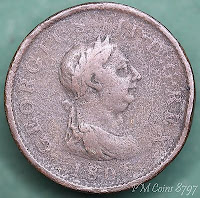HASSAN’S WALLS LITHGOW
WESTERN BLUE MOUNTAINS
Anyone driving on the Great Western Highway between Hartley
and Lithgow will have noticed the cliffs of Hassan’s Walls above them. They are
outliers of the same Triassic sandstone
familiar to everyone in the western Blue Mountains.
Like Govett of Govett’s Leap at Blackheath, people ask “Who was Hassan?” Answers will vary: he
was an escaped convict (there was a convict stockade below the Walls in the
early days), he was a character in the Arabian Nights, he was an Arab stockman.
The right answer seems to be that Governor Lachlan Macquarie
named the Walls during his trip to Bathurst in 1815 on the newly built Cox’s
Road. It is said that they reminded him of the Walls of Hassan in southern
India, but whether this is true or not I cannot say. However the name came to
be given, it has certainly stuck.
 |
| 1895 newspaper quote |
The Walls have always been a tourist attraction to visitors
and the people of Lithgow. The area was made a Reserve as long ago as 1895;
however it was the work of James Padley
during World War 1 that laid the foundation for the Reserve as we see it today.
Even a brief look at Trove (newspaper
files) reveals the extent of the problems – vandalism, littering, stealing
native plants
 |
| Illustrated Sydney News February 7th 1889 |
and just general apathy. Nor have these problems ceased in the
district. The Zig Zag Railway has been suffering from constant vandalism and
theft for years, most likely carried out by local residents, perhaps the
descendants of the Hassan’s Walls vandals of earlier years.
Lithgow City Council is in the process of having a
boardwalk, interpretive signs etc constructed right now (January 2014). No doubt these will
be great assets and improve the visitor’s experience greatly. However, history
shows that the graffiti “artists”, vandals and thieves won’t take long to get
up there to try to spoil that experience.
The area has an incredibly varied fauna which includes
plants scarcely known elsewhere. Please protect this environment – no rubbish,
keep to made tracks and the boardwalk and definitely no fires!
Something needs to be said about the prominent rock outlier
so noticeable during the drive around the “Forty
Bends” at Old Bowenfels. Right at the end of a ridge, you can hardly miss
the likeness to a man’s head. I’ve been aware of it for as long as I can
remember. The old name for this erosional feature is “King George’s Head”, though I have heard it called “Indian’s Head”
locally as well. Let’s stick to the traditional name.

So why King George’s Head? The king referred to is
undoubtedly George III and the only likeness most people in Australia would
have seen of the king was on his coinage. He faces right on his coins, as does
the rock when seen from the Highway (which rules out Georges II and IV who face
left on their coins). The best known image of King George (who reigned from
1760 to 1820) is on the celebrated "cartwheel
penny” of 1797, which circulated widely in the colony. I believe this is
the origin of the name.
NOTE ADDED 11th November 2017.The 1806 penny, especially a worn example (which was the usual condition of Australian circulating coins) is more likely to have been in the pockets of people in those days. They remained in circulation right up to the gold rush days.
You will find a fascinating account of Lithgow in this
article from the Illustrated Sydney News February 7th 1889) from
which the pictures above come. The article also mentions King George’s Head. Click here.
A good article about the development of the Reserve in James
Padley’s time may be found here.
NOTE ADDED 28th March 2015 - report from the Lithgow Mercury on a recent landslide here.
https://johnsbluemountainsblog.blogspot.com/2013/12/links-to-all-blog-entries-and-relevant.html All Blue Mountains blogs and videos
All New England and other Geology blogs and videos
Limestone Caves of NSW
Song Studies. Bible studies based on hymns and songs
Shoalhaven District Geology.




No comments:
Post a Comment